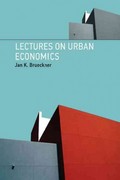Answered step by step
Verified Expert Solution
Question
1 Approved Answer
the question very much so makes sense. you just have to read the latter part. consumer prefers more and likes diversity. heres a link of
the question very much so makes sense. you just have to read the latter part. consumer prefers more and likes diversity.
heres a link of the powerpoint of chapter if needed https://drive.google.com/file/d/1RC4a8SUJq1XdUtQBa6adhK26ZsPw3sYU/view?usp=sharing
and
heres the entire textbook https://drive.google.com/file/d/1sCXbYzE8XeKssC7z1xqGNQ16bwm0f-sY/view?usp=sharing pg 98-122 by the way

Step by Step Solution
There are 3 Steps involved in it
Step: 1

Get Instant Access to Expert-Tailored Solutions
See step-by-step solutions with expert insights and AI powered tools for academic success
Step: 2

Step: 3

Ace Your Homework with AI
Get the answers you need in no time with our AI-driven, step-by-step assistance
Get Started


